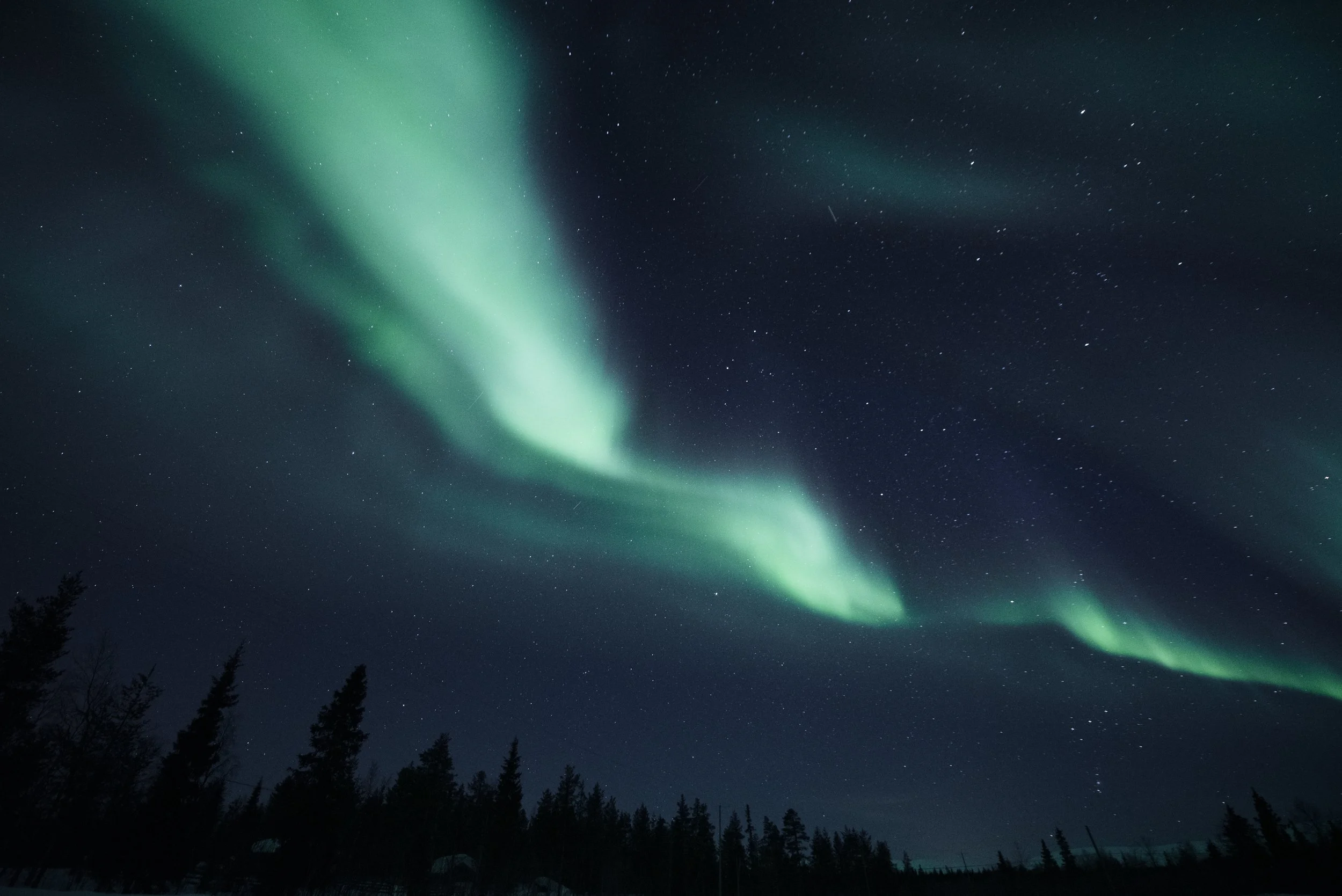KP and Bz Explained: The Science Behind the Northern Lights
1. KP Index = Global Aurora Power
KP (short for planetary K-index) measures how much Earth’s magnetic field is shaking because of solar wind hitting it.
The Sun constantly throws out charged particles — a solar wind.
When those particles slam into Earth’s magnetosphere (our invisible magnetic bubble), they cause it to wiggle.
Scientists measure that wiggling using magnetometers around the world and give it a number: 0 to 9.
That number = KP index. It tells us how strong and widespread the geomagnetic storm is. In practice:
KP 0–2: Quiet, auroras stay near the North Pole.
KP 3–4: Some activity; visible in northern Lapland.
KP 5–6: Geomagnetic storm! Lights can reach central Finland or Scotland.
KP 7–9: Big storm — auroras visible even in central Europe or the northern US.
So: higher KP = stronger solar storm = auroras visible farther south.
KP 3-4 in Levi, Finland
2. Bz = Magnetic Door Direction
Bz measures the direction of the magnetic field carried by the solar wind. It’s one part of a three-dimensional vector (Bx, By, Bz), and it’s measured in nanoteslas (nT).
Here’s the key:
Bz negative (−) → The magnetic field from the Sun points southward.
Earth’s magnetic field points northward.
When those two are opposite, they connect! Like magnets snapping together — and energy flows in.
That energy powers the auroras.
Bz positive (+) → The magnetic fields point the same way and repel each other.
The “door” stays closed, and very few particles get in.
In short:
Negative Bz = good. Door open. Auroras likely.
Positive Bz = bad. Door closed. Auroras weak or none.
Bonus Facts:
KP is calculated over 3-hour periods, so it’s a summary of global activity.
Bz changes minute-by-minute — it’s real-time.
That’s why aurora chasers often stare at live space-weather graphs at 2 AM whispering, “Come on, go negative…”
What a KP 9 Storm Means
KP 9 is the highest possible value on the scale (0–9).
It means Earth’s magnetic field is shaking so much that the aurora oval — the zone where northern lights appear — stretches far south.
Instead of being centered over northern Lapland, the oval can reach:
Central and southern Europe (e.g. Germany, France, Poland)
Northern parts of Italy or Spain in extreme cases
Even parts of the United States, like northern Texas or California’s skies
Why You Might Not See Them in Lapland Then
When the auroral oval expands southward during extreme storms, Lapland can actually be too far north — the lights may shift toward the southern horizon, or even appear south of you!
So in Lapland, people might see a dim glow low on the horizon, while people in Germany or France are shouting, “We can see the aurora!”


